What Is BLS Certification? The Power of Learning Life Support
What Is BLS Certification? The Power of Learning Life Support

by Greta Kviklyte
Life Saver, AMC
Co-authored by Kim Murray, RN, M.S.
posted on Jun 30, 2024, at 4:32 pm
Ever wondered what it takes to save a life? BLS certification might just be the answer you’re looking for. Standing for Basic Life Support, this certification equips you with crucial knowledge about what to do in life-threatening situations.
Learning these skills can benefit teachers, coaches, and concerned citizens alike. But what is BLS certification for?
People like you—healthcare providers who want to update their knowledge and climb the career ladder.
In this guide, I’ll give you an in-depth look at BLS for healthcare providers. You’ll learn what it looks like to get your BLS certification online – and why you should.
What are the pros and cons of getting your BLS card online vs. in-person? Is it really the same thing? I’ll cover it all!
We offer Online CPR and BLS Certification
What is BLS Certification?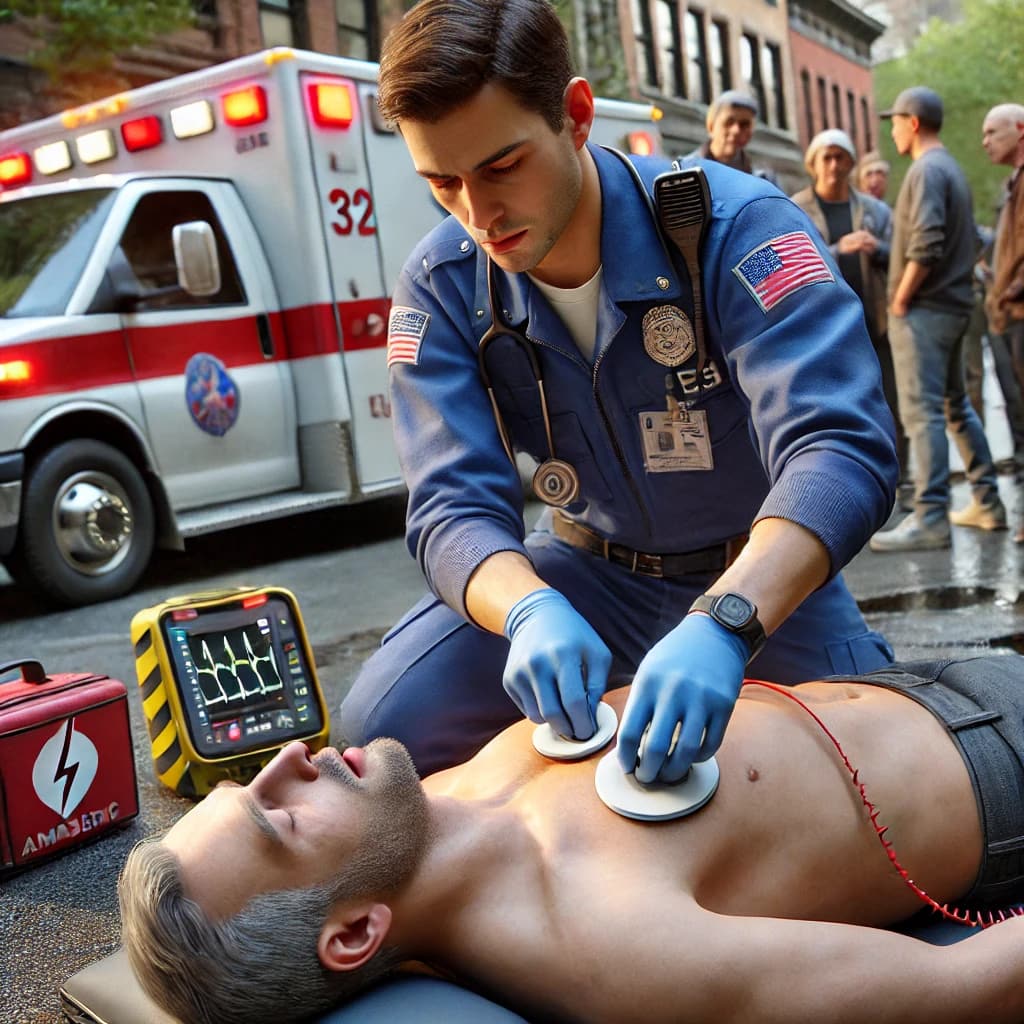
BLS Certification is a special acknowledgment from an accredited organization. It’s designed for those, like you, who provide essential life-saving care or manage those who do.
It includes evidence-based algorithms that simplify decision-making during intense situations. This helps you, your co-workers, or a code blue team work together efficiently and confidently.
When everyone’s working from the same playbook, less time is spent identifying the best course of action. You just do!
Many studies support this approach to critical care.
Studies like this one show that BLS training improves knowledge and skills in lifesaving care.
Furthermore, studies show that following BLS protocols improves the rate at which life-saving shock and compressions begin, as well as, proper compression depth. These have been shown to improve survival to discharge rates.
This certification goes beyond CPR (Cardiopulmonary Resuscitation) to expand your knowledge surrounding critical lifesaving tools like the Automated External Defibrillator (AED) and techniques for emergencies like choking, labored breathing, or poor blood circulation.
This training is designed to be comprehensive for medical professionals, but it also provides information that a bystander could use to assist EMS or support life until EMS arrives.
BLS vs. CPR
When a non-medical person takes a CPR course, ease of understanding is the most important factor. Even if a CPR course could go into more detail, it doesn’t. That would complicate the procedure, which could actually do more harm than good.
Therefore, a BLS course expands on CPR with more details across adults, children, and infants. This helps a more skilled professional accommodate these differences.
Compared to CPR, BLS provides you with more advanced AED (Automated External Defibrillators) training to make even better use of this lifesaving device.
CPR doesn’t discuss ventilation techniques in detail. In fact, it’s more likely to encourage hands-only CPR for the average person.
Not only are people more likely to perform CPR when they don’t have to give breat, but one study published in JAMA found survival rates almost doubled among lay rescuers with hands-only CPR.
Giving breaths properly is harder than it looks in the movies.
However, that’s not the case for medical professionals like you. BLS ensures you know what quality breath is. And because you are not a lay rescuer, you can do it correctly.
CPR trains a person for single-rescuer and two-rescuer scenarios. However, because BLS is more appropriate for medical professionals, it focuses on the importance of teamwork between well-trained co-workers who hopefully each maintain a BLS Certification.
Even as a health care provider, it’s important to know what the average person is taught to do in a CPR course so you can pick up where they left off in the Chain of Survival. That’s why you get CPR certified to obtain this knowledge.
BLS vs. First Aid
First aid teaches the average layperson about the very basics like:
- Cleanliness
- Minor wound care
- Identifying a stroke or heart attack in progress
- Managing allergic reactions
- Stabilizing fractures and strains
Everyone needs to know this stuff. But BLS focuses on what a medically-trained person like a nurse or EMT can do in more dire circumstances.
You’ll often have access to more advanced tools, even in your home. You also have more knowledge and experience to apply to a given situation.
What is BLS Certification vs. ACLS Certification?
BLS bridges the gap between the everyday rescuer and a medical professional. Getting a BLS certificate can benefit anyone.
If you were the only EMT in the room with someone facing a life-threatening emergency, you would want a bystander with BLS training there at your side. You both know the same procedures. You can work together to save a life.
ACLS (Advanced Cardiac Life Support), on the other hand, is intended for people with medical licenses only, such as:
- EMT-B
- Paramedic
- Nurse
- Doctor
- Pharmacist
- Physician’s Assistant
ACLS involves reading and interpreting EKGs, administering injections and infusions, and learning more advanced skills. Some of these things may be outside your scope of practice. But it’s still important for everyone on the team to know the protocols.
When you get PALS (Pediatric Advanced Life Support) certified, you’ve learned a type of ACLS. But it’s specifically for children and infants.
The Importance of the BLS Certification
BLS equips you with the skills to confidently take necessary actions during:
- Cardiac arrest
- Respiratory failure
- Stroke
- Choking
When you get your BLS certification, you’ll be better equipped to maintain vital blood flow to the brain. Keeping that blood moving can reduce brain damage and increase the survival rate to discharge, with the potential to return to the same quality of life (NIH.gov).
Who Needs BLS Certification?
If you are likely to come into contact with someone needing basic life support and may need to render aid or assist others in doing so, choosing to get BLS certified is a smart move.
It looks great on your resume. And you never know when you might get to use what you learn.
Non-Medical Professionals Who Need Basic Life Support Training
Non-medical individuals might include:
- Teachers, daycare workers, and aides
- Personal trainers and coaches
- Firefighters
- Police
- Social workers
- Rec center employees
- Nursing home staff
- Carers for the elderly or disabled
- Management in these settings
In each of these cases, you can ensure that proper lifesaving care is provided immediately while waiting for medical professionals to arrive. That’s important because when someone is experiencing a medical emergency, the survival chances often come down to a matter of minutes.
Conversely, depending on your location, an ambulance’s arrival in the US can take around fifteen minutes.
Medical Professionals Who Need to Renew BLS Certification
Obtaining your BLS renewal online every two years is an easy way to stay up to date on the latest evidence-based care as a medical professional, such as:
- Nurse
- Physician
- Physician Assistant
- EMT-B and EMT-A
- Paramedic
- Dentist
- Pharmacist
- Technicians
Not only those who are medical professionals get to benefit from updating their knowledge. When you take an online BLS course with an accredited organization, it can also count toward your continuing medical education credits (CME).
You need 30 to 50 of these to renew your license. This varies from state to state. For example, Connecticut, specifies that you can complete a certain number of these online.
Taking a BLS course for certification can also be part of the reinstatement process if you allow your license to lapse. For example, in the state of California, a paramedic is required to complete training in BLS, ACLS, PALS, and PHTLS/ITLS (trauma response) within two years to get their lapsed license back.
Components of BLS Training
The main components of BLS include a more advanced understanding of:
- CPR training for adults, children, and infants
- Use of AED
- Choking and respiratory management techniques
- Assessment of the victim’s condition
Plus, BLS centers around team dynamics:
- Roles and responsibilities
- Effective communication
- Coordinating actions quickly
- Making evidence-based decisions
Online vs. In-Person BLS Certification
Taking a BLS course in a classroom certainly has its benefits, especially if this is your first time taking BLS. You can get some hands-on experience using training tools. But you also have the hassle of finding a course, getting there on time, and sitting through roughly four to five hours of training in one afternoon.
Alternatively, when you get certified in BLS online, you get to take the course on any device – on your schedule. You can take as many breaks as you want. And if you feel you need to review something you didn’t quite understand, you can. It’s 100% self-guided.
It fits into your busy schedule. If you have about five hours on a Sunday, you can even get those CME (continuing medical education credits) at the last minute when it’s time to renew your license. As a medical professional with a lot of hands-on experience, it’s really a no-brainer to do this online.
Validity of Basic Life Support Certification Online
It’s important to choose an accredited organization that has built an evidence-based course. For example, Advanced Medical Certification is accredited by many reputable credentialing organizations, including:
- American Nurse Credentialing Center (ANCC)
- Accreditation Council for Pharmacy Education (ACPE)
- Postgraduate Institute of Medicine (PIM)
- Accreditation Council for Continuing Medical Education (ACCME)
AMC’s BLS course is based on the scientifically validated procedures developed by the International Liaison Committee on Resuscitation (ILCOR). We update the course to align with the most recent addition to the handbook.
Maintaining and Renewing BLS Certification
Maintaining your certification is even easier than getting certified the first time. The course clearly states any recent guidance changes each time you take it.
This means that you can skim through the course (if needed), pay attention to anything that has changed, and then take the BLS practice test.
See how you do.
If you breeze through it, start the real exam. You can take it as many times as you like and even leave the test and come back. There is no time limit. And it’s an open book.
The Future of BLS Training
Advancements in technology will inevitably change what BLS looks like in the next three to five years. ILCOR publishes new guidelines every five years, with the last guide released in 2020. Based on what’s been happening over the past several years, here are some changes we might see.
Virtual Reality and Augmented Reality
VR and AR have the potential to change how people interact with educational materials. They can create a more immersive experience. While not critical to learning BLS, we could see more training incorporating some VR and AR in their programs.
More Efficient Training
It’s becoming easier for online certification programs to offer the same robust training as in-person courses. In the coming years, we can expect these courses to become more accessible to all kinds of learners. Plus, I expect them to become the rule rather than the exception when it’s time to renew your BLS card.
What’s more, online training gives analysts instant feedback on how learners learn best. I anticipate that courses will combine this user data with the power of AI to enhance information presentation and retention.
BLS Protocols Changes Could Happen
In terms of protocols, we’ll likely see a stronger emphasis on hands-only CPR for layperson rescuers. Giving breaths could even disappear from some regular CPR courses. There might also be an integration of new technology like automated CPR devices, heart rate, and glucose wearables (if being worn), and portable EKGs as these tools become more available and prevalent.
What is the BLS Certification?
BLS certification provides verification to your employer and licensing board that you’re committed to professional learning and improving patient care. Similarly, a BLS recertification demonstrates that you stay current with the most recent evidence-based protocols for basic life support. It helps you work efficiently and confidently with your team during tense situations when seconds matter. You can get your BLS certification or renewal online here.
Frequently Asked Questions About BLS Courses
What is the duration of a typical BLS certification course?
A typical BLS course takes four to five hours, including exam time. If you need to get your BLS recertification, you may do it much faster.
How much is BLS certification?
A BLS certification course typically costs around $100. You can save money when you bundle BLS with ACLS and PALS, or, renew for life.
Who can provide BLS certification?
Only an accredited organization should provide certification. You should always check for this certification. Failure to do so may result in your certification being rejected by your licensing organization.
Is online BLS certification valid?
Absolutely. Many states encourage professionals to get up to half of their continuing education credits online. Please check with your state and licensing body for more details.
How long is BLS certification good for?
A BLS certification is good for two years. After that, you can renew it for a lesser fee.
When does BLS certification expire?
Every two years. These courses are intended to help you stay up-to-date without putting an undue burden on you to complete a more lengthy course.
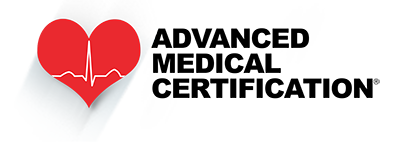
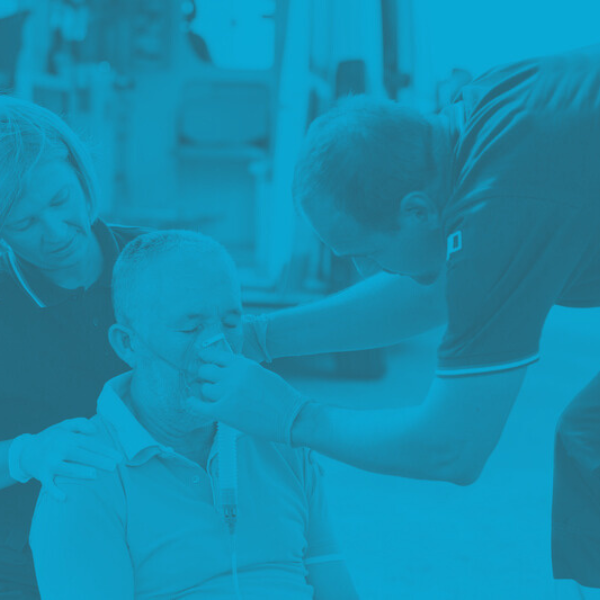


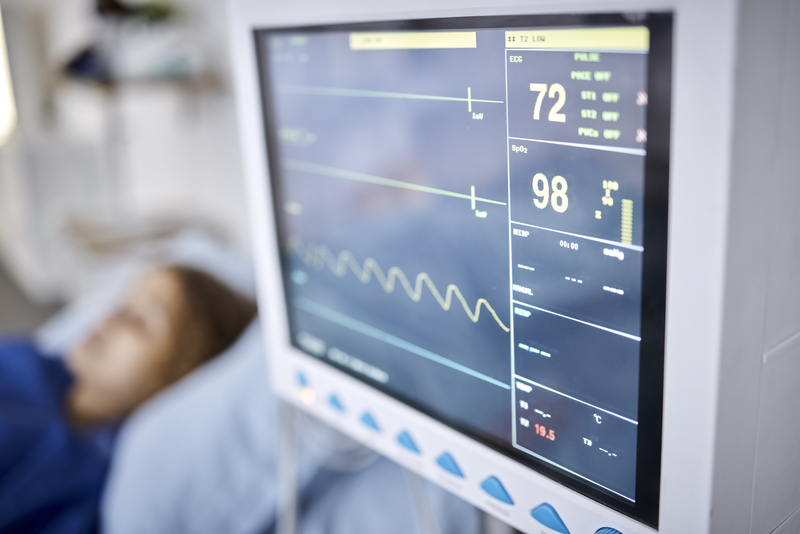 The main goals of the respiratory system are to bring oxygen into the body and expel carbon dioxide out of the body. Some of the main structures involved in the respiratory system include, but are not limited to, the following:
The main goals of the respiratory system are to bring oxygen into the body and expel carbon dioxide out of the body. Some of the main structures involved in the respiratory system include, but are not limited to, the following: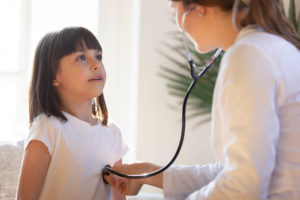 he respiratory rate refers to the number of times a person breathes in one minute while at rest (i.e., not performing exercise or physical activity). The normal respiratory rate in a child tends to be quicker than an adult’s.
he respiratory rate refers to the number of times a person breathes in one minute while at rest (i.e., not performing exercise or physical activity). The normal respiratory rate in a child tends to be quicker than an adult’s.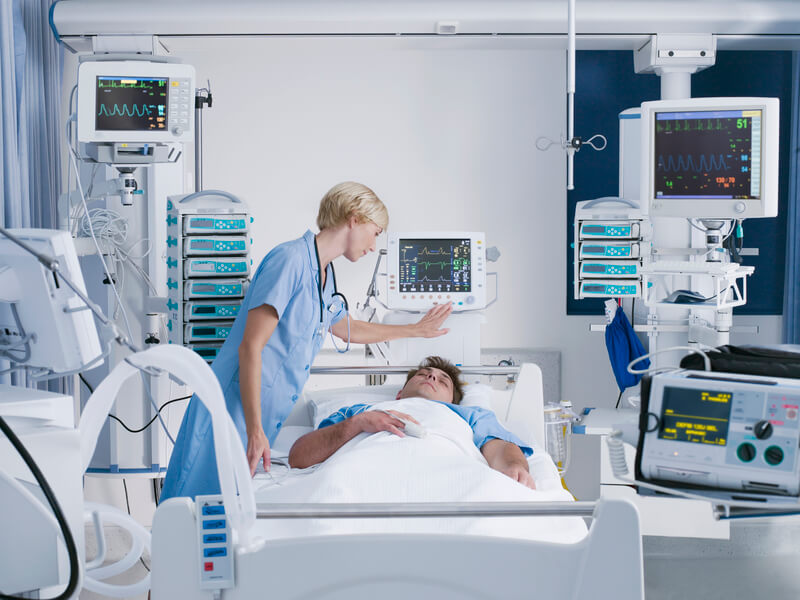 The only way to monitor your breathing rate manually is to count the number of breaths you have while at rest. Once you learn how to measure your respiratory rate (as noted above), you can track your breathing rate over time to notice differences.
The only way to monitor your breathing rate manually is to count the number of breaths you have while at rest. Once you learn how to measure your respiratory rate (as noted above), you can track your breathing rate over time to notice differences.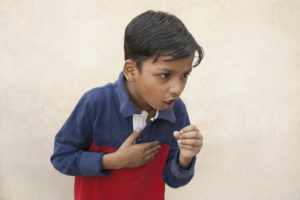 If there is any concern that a child is suffering from respiratory distress, call 911. If a child passes out, begin cardiopulmonary resuscitation (CPR). Importantly, rescuers who are alone should perform CPR on a child for at least 2 minutes before stopping to call 911.
If there is any concern that a child is suffering from respiratory distress, call 911. If a child passes out, begin cardiopulmonary resuscitation (CPR). Importantly, rescuers who are alone should perform CPR on a child for at least 2 minutes before stopping to call 911.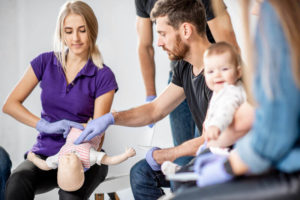 For non-medical professionals and laypeople, BLS and other advanced lifesaving certifications aren’t necessary. However, CPR and basic first aid are extremely valuable skills for anyone to know. Individuals who choose to learn CPR and basic first aid could end up saving a life someday—including the life of someone they love or work with.
For non-medical professionals and laypeople, BLS and other advanced lifesaving certifications aren’t necessary. However, CPR and basic first aid are extremely valuable skills for anyone to know. Individuals who choose to learn CPR and basic first aid could end up saving a life someday—including the life of someone they love or work with.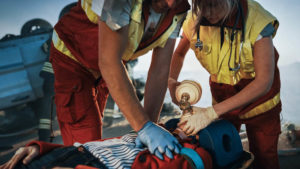 BLS certifications must be renewed every two years. This is to ensure essential lifesaving skills and knowledge are retained, which can help improve outcomes for people suffering from life-threatening emergencies.
BLS certifications must be renewed every two years. This is to ensure essential lifesaving skills and knowledge are retained, which can help improve outcomes for people suffering from life-threatening emergencies.